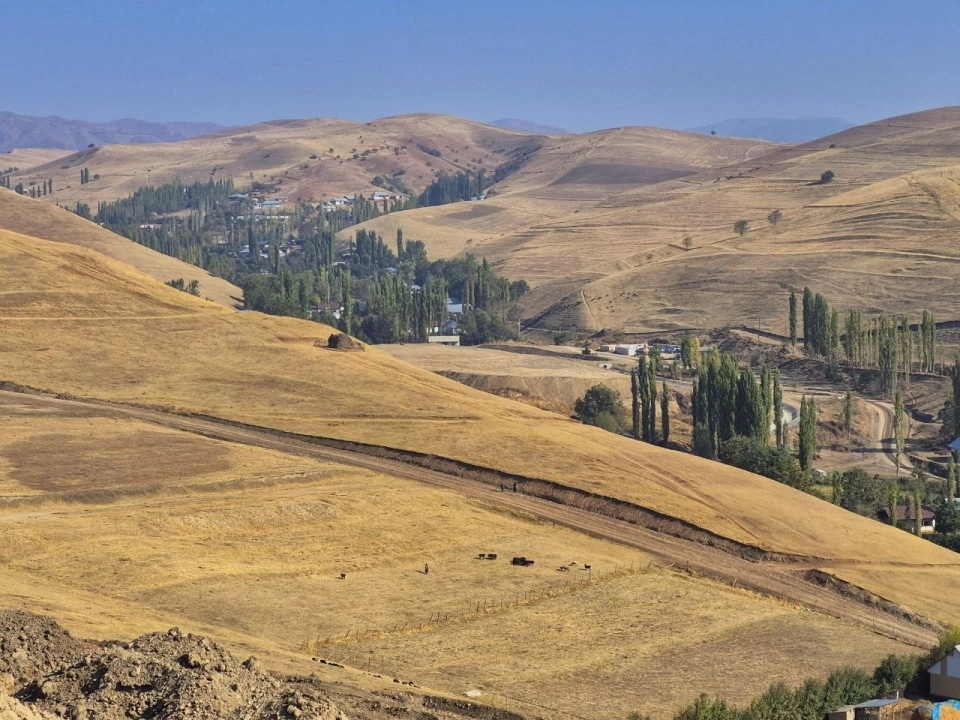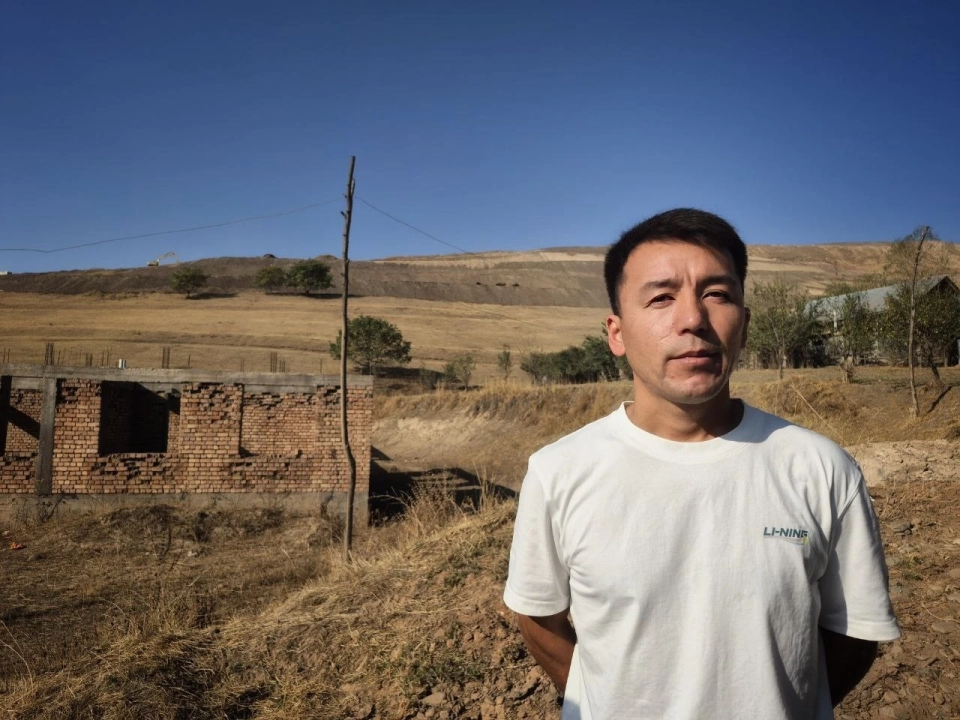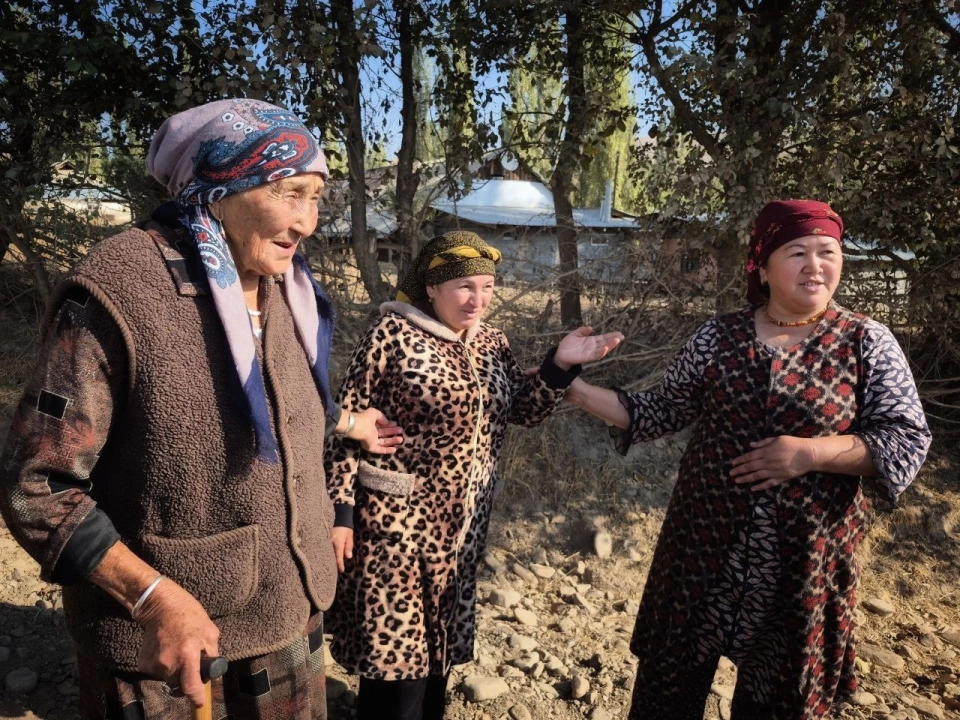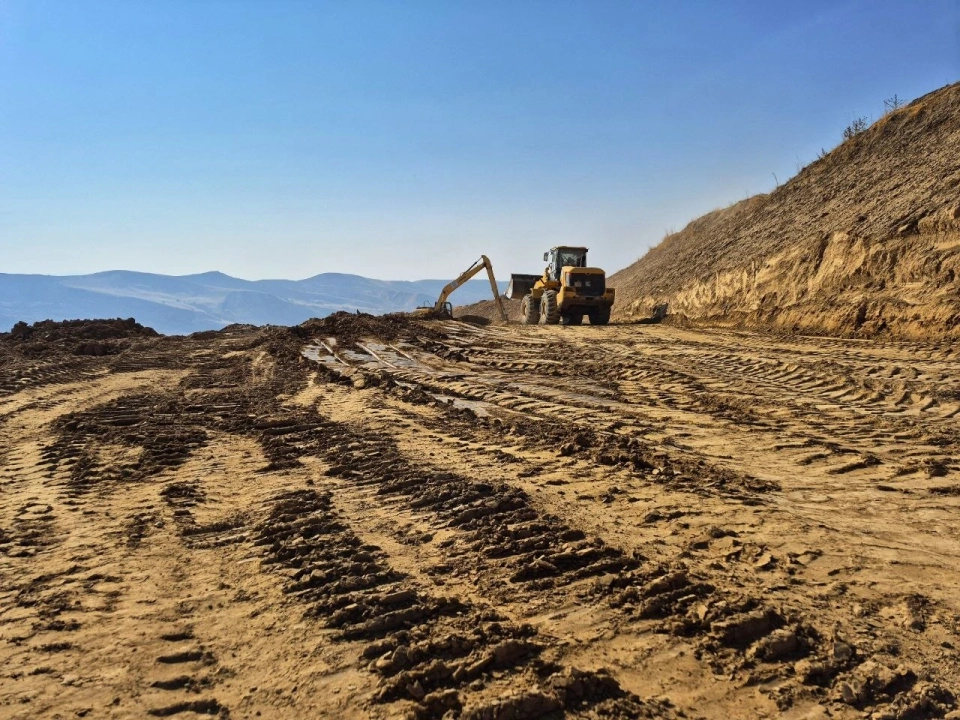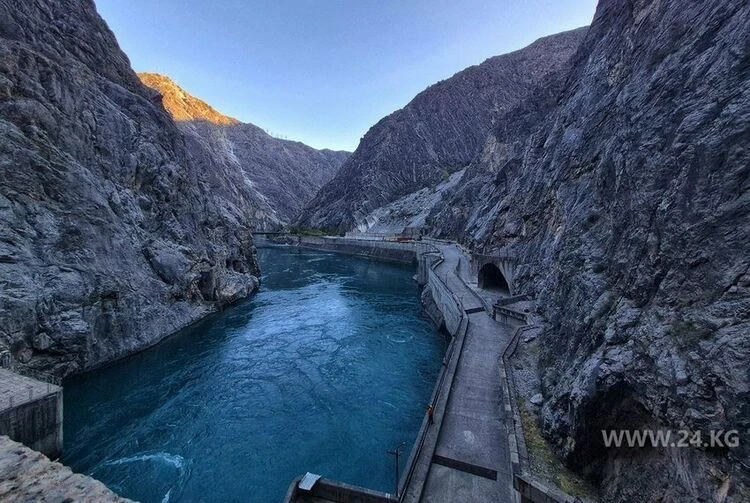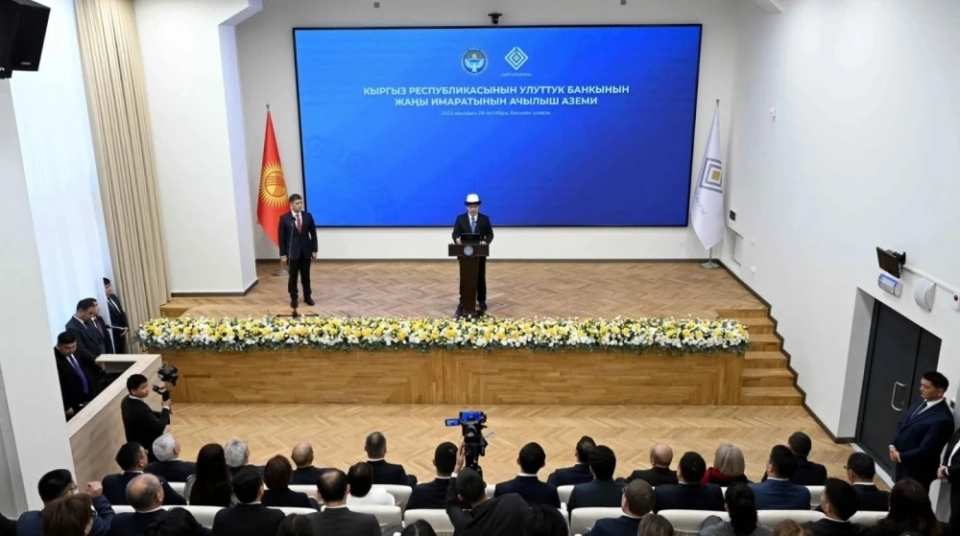“It was early morning when people were asleep. The landslide happened instantly, there was no chance to escape,” recalls Zainapkhan Daniyarova, one of the local residents who continues to live here despite the danger.
Photo 24.kg. Ayuu-Sai
Dangerous Living Conditions in Ayuu-Sai
As of today, 46 houses in Ayuu-Sai are at risk, housing nearly 200 people. This village has become the site of the largest landslide risk reduction project in Central Asia.“We do not have the right to forcibly evict people, as the law does not allow it. However, we are looking for ways to ensure safety,” says Marat Ablazizov, a geotechnical monitoring specialist for landslides at the Ministry of Emergency Situations.
Work on the project began in August 2022 and is nearing completion. The total cost of the subproject is 185.4 million soms, with the contractor being the interregional risk management center under the Ministry of Emergency Situations of Kyrgyzstan.
The project covers 46 hazardous sites across the country. Engineering works such as terracing and soil reinforcement are underway at 26 of them, while automated monitoring systems have been installed at the others, transmitting data to the Risk Management Center.
“This is the first project of its kind not only in Kyrgyzstan but also in Central Asia. Even for the Asian Development Bank, this is a pilot project,” clarifies Ablazizov.
Photo 24.kg. Emergency Situations Employee
Funding and Safety
The total budget of the program is 39 million dollars, of which 23.5 million is a grant from the Asian Development Bank (ADB), 11.5 million is a loan from ADB, and 4 million is co-financing from Kyrgyzstan.Thus, safety is funded by international partners, while the state participates minimally, and residents demand protection but are not always ready for changes.
If others are funding our safety, why are we not ready to change for it ourselves? This will be discussed further in the material.
Methods for Landslide Prevention
Funds have been invested, expectations are high — let’s figure out how this project is being implemented and what is actually happening in Ayuu-Sai.The first stage included terracing — leveling the slope and removing unstable masses to a safe location.
In the second stage, reclamation is underway: terraces are covered with a layer of vegetation to restore the landscape and strengthen the surface, which reduces the risk of moisture infiltration and mudflows.
In the third stage, after all work is completed, specialists from the Ministry of Emergency Situations will monitor displacements using GPS sensors for two years. If no deformations are recorded, the site will be deemed safe for the construction of a school or kindergarten.
The goal is to reduce the risk of landslides. This is not “protection,” but prevention.
“Data will be transmitted to the Risk Management Center of the Ministry of Emergency Situations. In case of a threat, the population will be warned,” explains Ablazizov.
Although this sounds modern, people live in fear. Monitoring takes at least two years, and there is no guarantee that the land will not slide earlier, as happened in 2017.
Prayers for Safety
After the tragedy, some families left the village, but many stayed.“We moved here in 2010. The land belongs to my husband’s father. Until 2017, no one spoke of risk. After the tragedy, some left; those who had the means built new houses. We stayed. Every evening we pray to wake up alive,” shares Zainapkhan Daniyarova.
Photo 24.kg. Local Residents
The government offers alternative plots but does not provide funds for construction.
“It’s just land. But where is the house? The government does not give money for housing construction,” adds another local resident.
People also express dissatisfaction with everyday problems such as dusty roads, lack of a bridge, and mudflows flooding the streets.
When journalists and emergency services staff got into the car, shouts rang out: “Solve our problems! Don’t deceive us!” The officials' response was brief: “We are negotiating. The issue is not yet resolved.”
School Construction Scandal
The situation is exacerbated by confusion over land. In Ayuu-Sai, where the tragedy occurred in 2017, construction of a school has begun, but work has been suspended despite 8 million soms already spent.“The terrain is complicated, there were no alternative plots,” the Ministry of Emergency Situations explains. But who gave permission for construction in a hazardous area? Who will be held accountable for the funds spent?
Until 2017, land allocation was not coordinated with the Ministry of Emergency Situations. Many plots were allocated for agriculture, but people began to build houses. Now, with new safety requirements, the State Register does not issue “red books” for such plots.
Photo 24.kg. Ayuu-Sai
System Under Pressure
According to the Ministry of Emergency Situations, there are 5,445 landslide-prone areas in Kyrgyzstan, of which nearly 2,000 threaten populated areas. The highest number of such areas is in the Osh and Jalal-Abad regions.Since 1994, the government has been trying to resettle residents from hazardous zones by offering plots and loans. However, in practice, families do not leave.
“The government allocates land and loans, but the family leaves the eldest son behind, and the parents stay. We cannot forcibly evict — the law does not allow it,” admits Ablazizov.
This is a legal deadlock: the Constitution guarantees the right to life and safety, but the law does not provide mechanisms to protect this right.
Responsibility of Three Parties
The story of Ayuu-Sai is not only about the tragedy of 2017 but also a legal and social deadlock where three parties bear responsibility.1. Government structures:
- allowed construction without approvals;
- do not have an effective law on forced eviction;
- spend millions on projects without addressing the root of the problem.
2. The law:
- allows land allocation but does not control its use;
- does not protect people from their own decisions.
3. Residents:
- build houses knowing the risks;
- demand protection but are not ready to change their habitual way of life.
International Context and Landslide Atlas
In 2023, the "Atlas of Landslides in the Kyrgyz Republic" was presented in Bishkek, created jointly by the Ministry of Emergency Situations and ADB.
According to the atlas author Andrea Tamburini, Kyrgyzstan is prone to landslides due to rains, geology, terrain, and seismic activity.
Project implementation department director Anarkul Aytaliev noted that 46 sites formed the basis for the atlas and pilot project.
At the UN climate conference in Baku, Deputy Minister of Emergency Situations Akylbek Mazaripov emphasized:
“Kyrgyzstan is actively implementing international disaster risk reduction programs. In the last eight months of 2024, the country faced a record number of mudflows. We are implementing localized risk assessment models and early warning systems to protect the population.”
On the Edge of the Abyss
Landslides are not just a natural phenomenon; they reflect our system.People stay because they have stopped believing in the authorities. The authorities are inactive, fearing the people. Between fear and irresponsibility, the land cracks again.
Who is to blame — those who build on slopes or those who allow them to live there? The answer is obvious, but no one speaks it aloud.
While in Ayuu-Sai, mothers pray to wake up alive, the country lives on the edge — between law and habit, between bureaucracy and clay.

